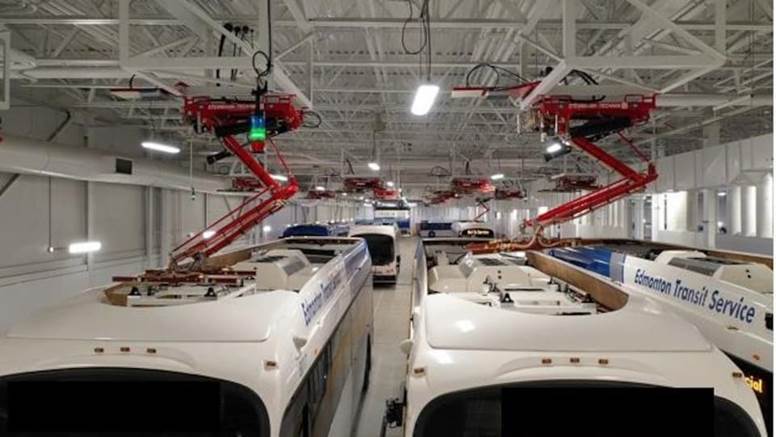Electrification of the STO
Background
As part of the Government of Quebec's 2030 Plan for a Green Economy, the STO is undertaking one of its biggest projects: becoming 100% electric.
As with all transportation companies in Quebec, the shift to electrical has begun. Here, at the STO, the installation of equipment to connect and charge vehicles is already underway. We are preparing to receive our first two 100% electric e-buses in 2024. These will give our crews the opportunity to familiarize themselves with the new technology before putting the buses into service.
E-buses will gradually replace diesel and diesel-electric hybrid buses. Given that the lifespan of a bus is approximately 16 years, and based on current projections, the entire STO fleet should be 100% electric by 2042.
Current status
At the Centre administratif Antoine-Grégoire (CAAG)
Kempower equipment is being tested. The technology makes it possible to charge three (3) e-bus at a time for a total of 150 kW spread over three (3) buses:
- 1 connected bus = 150 kW
- 2 connected buses = 75 kW each
- 3 connected buses = 50 kW each
The equipment:
NovaBus prototype
From December 4 to 22, we will be conducting tests on a NovaBus e-bus prototype:
- Checking how the equipment works, among other things in interaction with the bus for proper charging.
- Testing the required charge time and the autonomy of the vehicle's batteries based on various factors such as temperature, load and battery level.
- Assessing the batteries and the behaviour of this e-bus model on different routes.
These field trials and technical and mechanical tests will enable our crews to familiarize themselves with this new technology and to prepare for the next steps, including training for the mechanics and drivers.
The data collected will be analyzed and broken down in preparation for receiving and connecting the first two regular STO e-buses, one of which should be delivered in the first quarter of 2024.
Key phases
Electrification is a multi-year transformation project.
2021-2024 – Prototype “Test Period”
Preparation for the arrival of our first two LFSe e-buses, our labs on wheels!
Operations component
- Develop equipment maintenance skills;
- Identify resource and workload requirements;
- Assess the driving skills and training needs for drivers.
Technological component
- Assess the autonomy of e-buses under different road and weather conditions;
- Experiment with charging strategies at 150 kW;
- Test two different charging modes.
2022-2027 - Electrification of the Maintenance and Operations Centre
- Analyze power supply requirements;
- Study charging strategies;
- Project planning and design;
- Install charging equipment;
- Construction and redesign of the garage;
- Electric hook ups;
- Equipment testing;
- Employee training.
Plans to receive 44 e-bus at the Maintenance and Operations Centre
- 2025: 4 e-buses
- 2026: 20 e-buses
- 2027: 20 e-buses
2028-2030 + - Electrification of the Centre administratif Antoine-Grégoire (CAAG)
- Construction and redesign;
- Electric hook ups;
- Equipment testing;
- Employee training.
2042 – A system with 100% electric buses
We project full electrification of the STO fleet by 2042.
Main challenges
- Infrastructure transformation and conversion to enable charging of a large number of vehicles;
- Implementation of a smart system for managing the bus fleet to charge and dispatch the vehicles to the different circuits;
- System planning based on the autonomy of the batteries;
- Specialized workforce recruitment, development and training;
- Adaptation for mechanics, drivers and customers.
Partners
News
Available in French only









